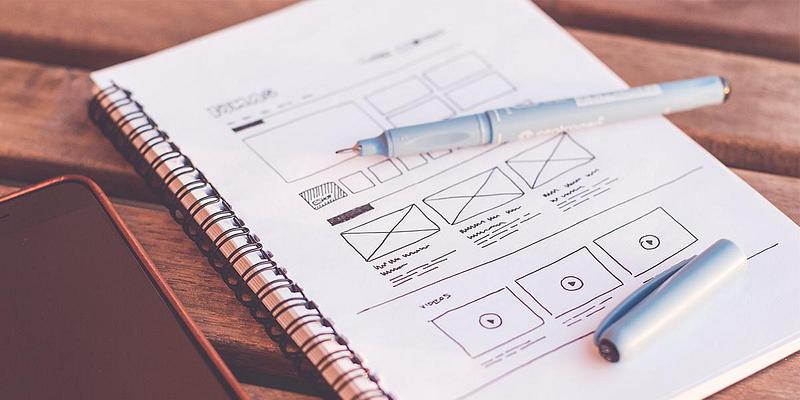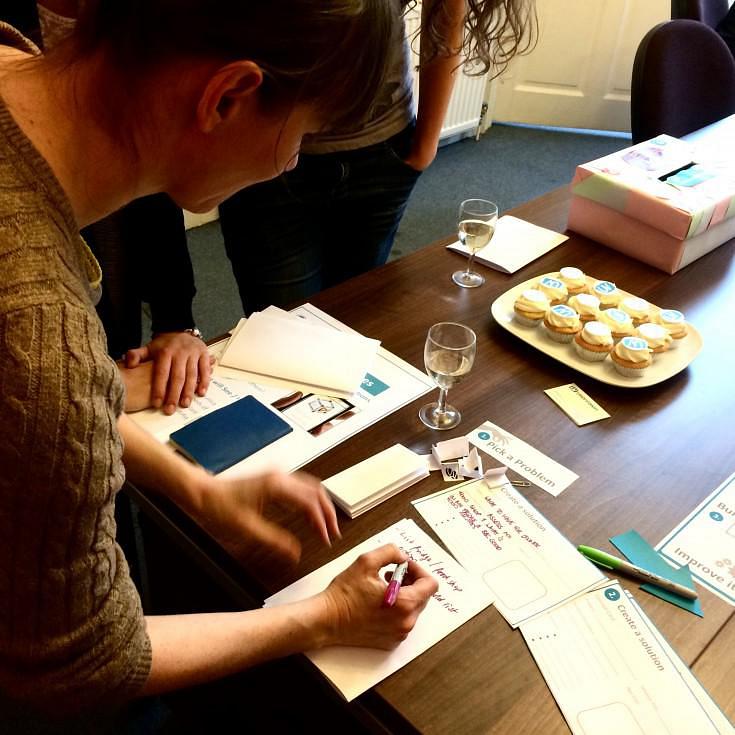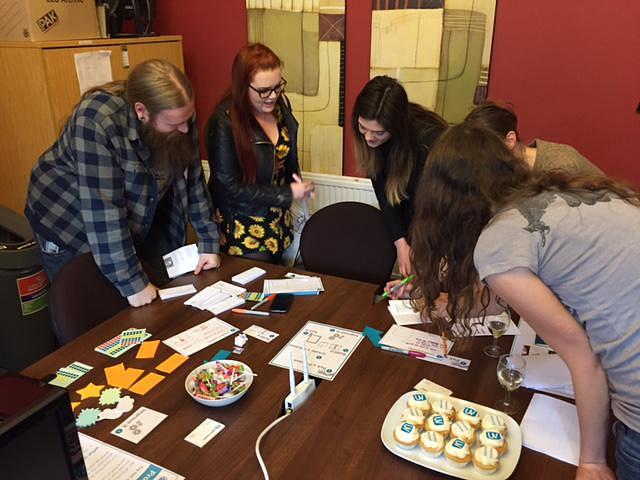World Usability Day – ‘Problems to Prototypes’ Workshop
27 November 2015 - Nicola Dunlop

In light of this year’s theme of ‘innovation’, I wanted to highlight the importance of prototyping ideas to generate innovative solutions. Many believe that innovative ideas come from lightning-bolt moments of inspiration and creativity, however behind every great idea there is an amalgamation of smaller thoughts which helped it to form. Therefore one could argue that the process of innovation is an iterative wheel or a machine that is continuously built upon and developed over time. As such, prototyping is a key contributor to this process, making ideas accessible to others and opening the doors to creative thinking.
What is prototyping?
For those new to prototyping, this is a method of creating a visual mock-up of an early idea to communicate its prime function to users and test its validity. Prototyping can be conducted in many different forms depending on the product or service being evaluated. If it is a website, the format could be as basic as paper screens stapled together or hyperlinked images to produce a sense of the basic user journey from beginning to end.
Regardless of the form, prototyping with users is an iterative learning experience in which areas of improvement are continuously discovered time and time again. Findings can then be applied to future design solutions. If the concept is tested early and tested often via prototyping it is likely the more effective and innovative the solution will be in the end.
What happened on the day?
The Problems to Prototypes workshop was broken down into a two staged process; paper prototyping and testing…
Stage 1:
The workshop began with our guests picking an everyday problem from a bag; (losing keys, deciding what to wear, deciding what to have for dinner) and creating a solution to that problem in the form of a new iPhone app. In order to communicate their initial ideas to others and generate feedback, our guests were asked to construct a rough paper prototype. Each screen of the application was sketched out on paper screens from beginning to end, with markers on key call to actions that tackled the problem at hand.
At this stage it was interesting to see that many found it challenging to work out how to communicate the key aspects of their concept on paper:

‘How do I do this with paper?…this is a button, I hope that is clear?’ – WUD participant
Even in low fidelity, paper prototyping is a powerful tool. It was great to see how it naturally pushed our guests to think strategically around the how the interaction should work at each stage. Only through really breaking the concept down did the proposition grow, with new ideas and opportunities emerging in ways that were not originally apparent.
‘Our idea…..it has arms, legs and now tentacles! It just keeps growing’ – WUD participant
At the end of stage 1, we had the basic solutions to our problem.
Stage 2:
Moving onto the next stage, participants began to look for additional feedback from others. Fellow WUD guests were shown the paper prototypes and asked for their ideas.
Again the paper mock-up worked well as the low-fidelity nature openly communicated that the idea was not fully formed and therefore acted as a catalyst for structured recommendation. As such, those asked were happy to provide suggested improvements to help drive the proposition into something much more robust and compelling. Feedback was recorded informally on review cards and then implemented into updated paper screens, evolving the concept at each stage. The more the concept was shared, the more ideas sparked across the room, transforming a straight forward concept to an innovative solution.

Conclusion
From the workshop the benefits of this quick and literally sketchy approach to prototyping was apparent to all our guests who took part. Not only did it trigger a more focused understanding of the product proposition but the user experience was automatically brought forward as a key consideration throughout the possible app solution. In addition participants had the ability to try out ideas without the pressure of getting everything right first time, and avoiding costly build, along with a low fidelity platform that encouraged feedback from others to helping innovative ideas to spark and robust concepts to form.
A low cost, low fidelity solution and yet highly effective!
And finally …
We often run training courses around prototyping and in particular prototyping tools. As experts in prototyping with Axure RP, we are hosting a FREE Breakfast Briefing on the newest release – Axure 8. Come and here about the new features and functionality it offers – reserve your place now!
You might also be interested in...
Getting to the root causes of usability errors and accessibility problems
10 April 2024Delve into the power of Perception-Cognition-Action analysis, unravelling the root causes of interface errors and hazardous situations to refine digital designs for optimal usability and accessibility safety.
Read the article: Getting to the root causes of usability errors and accessibility problemsCapturing the emotional experience in user research
8 November 2023What possibilities do you see around collaborating with AI to understand emotions in UX research? What downfalls do you foresee? Learn why the emotional experience of your product or service can impact a user’s decision to interact with it in the future, how UX researchers are currently capturing users’ emotional experience, and the possibilities that arise from collaborating with artificial intelligence (AI) in the future.
Read the article: Capturing the emotional experience in user researchGlobal Accessibility Awareness Day, May 2023
1 June 2023Our latest open house event for GAAD was a great success with our Empathy Lab and our wonderful panellists. Find out what we all got up to.
Read the article: Global Accessibility Awareness Day, May 2023